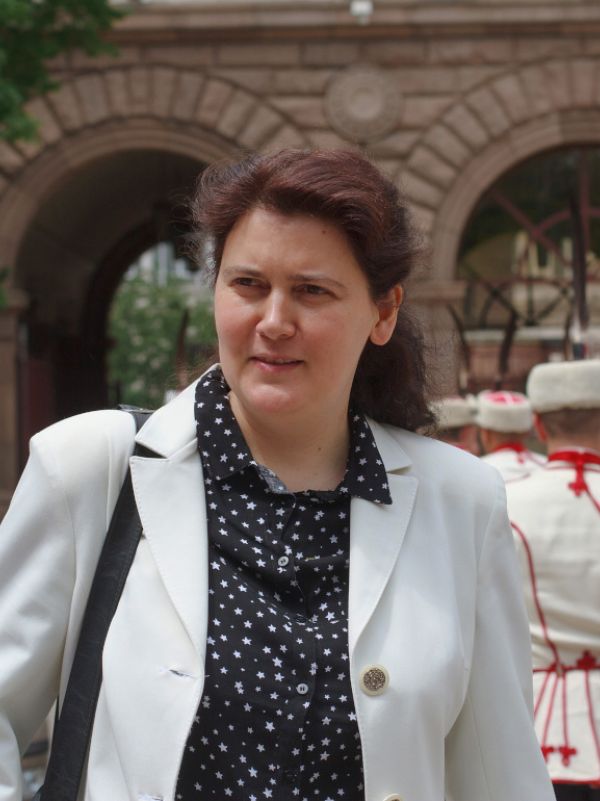Regina Koycheva, Asst. Prof. PhD
12/04/2025
Regina Koycheva, Asst. Prof. PhD
-
ABSTRACT
Elin Pelin’s first printed short story, “The Scourge of God” (1901), is a dialogue with the Bible that has not yet been the subject of independent research. The references to the Old and New Testaments in the text of the story have been discovered and analyzed in the present study. Subject of the research is how they participate in the message of the text, how they change and enrich the closed reading of the work. The analysis shows that Elin Pelin used in his own work primarily the eschatological biblical texts (to which the quote “Second Coming” at the end of the description of the drought refers) and the Book of Job (which, like the Bulgarian narrative, explores the causes of misfortune and examines the hypothesis of guilt from many sides). This result raises the question what Bible Elin Pelin read. For this purpose, certain passages of the story are compared with specific verses from the Holy Scriptures in three Slavic translations, which existed at the time of the writing of “The Scourge of God”. The comparison leads to the assumption that Elin Pelin most likely used the Russian Synodal translation of the Bible. The intertextual approach is combined with an analysis of the structure of the story. Duality is found to be the main structural principle according to which many components of the work (characters, attitudes, situations and plot events) are built. As the narrative unfolds sequentially, they split or double. The circumstances surrounding the creation of the work, as well as the spiritual convictions of the writer, are also examined.
07/05/2023
Regina Koycheva, Asst. Prof. PhD
-
ABSTRACT
The article outlines the parameters of the horrific in the Slavic mediaeval literature of Byzantine type. The aim of the research is to compare the mediaeval Slavic horrific with the Gothic version of the same category through a prospective approach. Translated and original Slavic-language works (different in origin, genre and style) from the IX to the XVII century have been analyzed, but later texts have also been used for comparison. Among the main contextual meanings of the Slavic mediaeval words for horror are: 1. ‘fear’, 2. ‘compassion’, 3. ‘fear combined with astonishment’, 4. ‘combination of wonder and delight’. Attention is paid to the significantly reduced presence of verbal signals of experience of horror-compassion in the Byzantine martyrs’ lives and, conversely, to the escalation of the feeling of horror in the Slavic versions of the vitas (in the works of St. Dimitry of Rostov). The common features which unite the mediaeval horrific and the Gothic one are above all the supernatural as a source of horror and the connection between the horror and the sublime. Revelation (to the mind) of the Divine plan for the salvation of people, which is the most sublime phenomenon in the history of the world, stimulates the theological activity of mind and arouses delight. In mediaeval Slavic texts, however, this delight is often referred to by the lexeme оужасъ and its derivatives. The reason for this is sought primarily in the Greek equivalent ἔκστασις, which tends to be used as a generic term for going beyond the usual emotional states, for any kind of extreme experience – positive or negative.
01/14/2021
Regina Koycheva, Asst. Prof. PhD
-
ABSTRACT
Une des premières œuvres religieuses de Stoyan Mihaylovski est un cycle de poèmes, publié pour la première fois en 1884. À l’époque, il faisait partie du recueil de psaumes et de paraboles « Le Pope Bogomile ». En 1889, sa variante fort remaniée a été publiée deux fois – dans le recueil de poèmes « Novissima verba » sous le titre de « Sursum corda ! « et puis, toute seule, sous la dénomination « Dieu (poèmes bibliques) ». L’objectif de la présente étude est de comprendre les raisons pour lesquelles Mihay- lovski a procédé à ce remaniement de son œuvre. Une analyse attentive des corrections faites par l’auteur révèle qu’elles sont le résultat du désir de l’auteur de perfectionner l’œuvre mais aussi celui du tournant décisif dans les positions religieuses de l’auteur notamment pendant les années entre les deux éditions. L’œuvre change d’orientation – de la croyance des bogomiles vers le culte chrétien. La christianisation est réalisée au niveau lexical mais aussi par l’incrustation de symboles et de formes médiévaux typiques dans la composition du cycle et du rythme du vers (du symbo- lisme chrétien des chiffres, des allusions à l’hymnographie). Cette tech- nique fait de la création religieuse de Stoyan Mihaylovski une étape clé entre l’ancienne et la nouvelle littérature bulgare.


